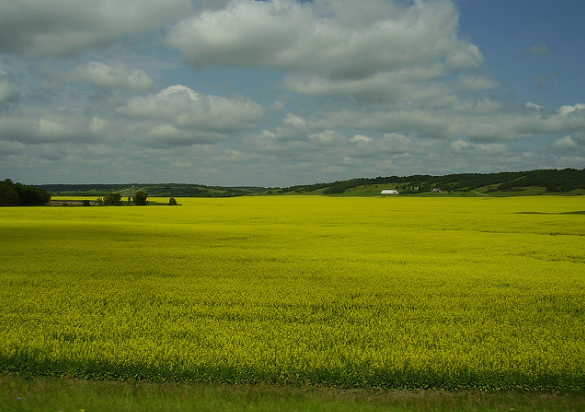Canada News
Canadian Wildlife Federation wants Ottawa to protect prairie grasslands

The Canadian Wildlife Federation wants Ottawa to stop turning over community pastures to the Prairie provinces because of concerns it has about species at risk. (Photo: Adam Kahtava/ Flickr)
The Canadian Wildlife Federation wants Ottawa to stop turning over community pastures to the Prairie provinces because of concerns it has about species at risk.
In 2013, the previous Conservative government began a plan to transfer control of 900,000 hectares of community pastureland to Saskatchewan, Manitoba and Alberta by 2018.
The federation says these provinces have not committed funding for managing species at risk on the pastures that were owned and managed by Agriculture Canada.
Carolyn Callaghan of the federation says these prairie grasslands are home to at-risk animals such as the greater sage grouse, swift fox, burrowing owl and black-footed ferret.
Callaghan says federal Environment Minister Catherine McKenna needs to work with these provinces to ensure the areas that have already been transferred are protected.
The federation suggests the fate of the pastures should be part of discussions between Ottawa and the provinces on how Canada can meet its promise of protecting 17 per cent of terrestrial habitat across the country by 2020.
“We are very concerned about the fate of our native grasslands and the species at risk they support,” Callaghan said Thursday.
“There remains an opportunity to see the lands protected and to ensure continued stewardship in partnership with cattle ranchers.
”
Callaghan said there is come concern that Saskatchewan may want to sell the pastures.
The Prairie Farm Rehabilitation Administration community pastures were created following the dustbowl of the 1930s as part of a federal soil conservation program.
The system included 61 community pastures in Saskatchewan, 24 in Manitoba and two in Alberta.
The federation estimates that about 2,500 beef producers used the pastures each summer, grazing about 220,000 head of livestock for a fee.
Callaghan said the temperate grasslands are one of the most endangered ecosystems in the world.
“Over 80 per cent of native prairie has been lost in Canada, and the community pastures represent a large portion of what remains.”
Environment Canada officials were not immediately available for comment.





















